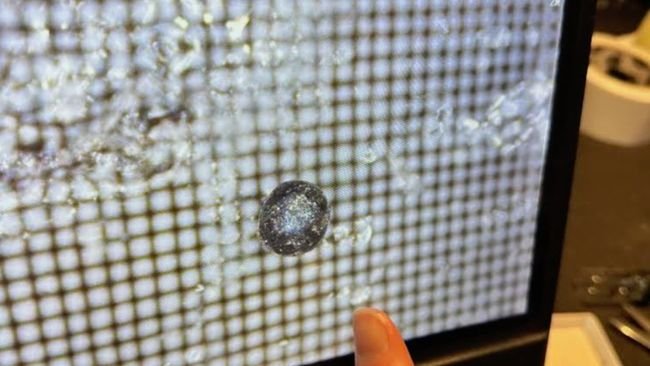Scientists have found confirmation of a technologically advanced civilization on Earth
Last year, Avi Loeb, an astrophysicist at Harvard, announced that small metal balls recovered from the ocean may be the remains of an interstellar meteorite and may contain signs of alien technology. However, recent research points to a more likely origin for this find.
In 2014, during an expedition off the coast of Papua New Guinea, Loeb and his colleagues discovered microspheres while searching for meteorite debris. Based on the speed of the meteorite, Avi Loeb suggested that the meteorite was of interstellar origin.
Analysis of the metal spheres revealed a number of “anomalous” properties: five of them contained high percentages of beryllium (Be), lanthanum (La) and uranium (U). Loeb called them “BeLaU spherules” and believed that their composition could be evidence of alien technology: elemental abundance exceeded three orders of magnitude compared to chondrites in the Solar System.
However, many scientists unrelated to this research objected to these claims even then, and new research confirms their doubts about the extraterrestrial origin of the spheres.
First, the question was raised about whether the meteorite in question was truly interstellar. A new non-peer-reviewed paper indicates that its speed was only recorded by US military devices, and some researchers believe there was an error in the speed measurement. However, even if the speed was measured correctly, the chances that a significant portion of the meteorite was preserved after passing through the atmosphere are extremely low.
“Even if the meteorite is interstellar, there will be almost nothing left of it after passing through the Earth’s atmosphere. If it was moving at the speeds that were recorded (and that are required for interstellar origin), then at least 99.8% of the matter should have evaporated in the atmosphere, leaving only a small amount that could settle on the ocean floor,” write the authors of the new research by Professors Stephen Desch of Arizona State University and Alan Jackson of Towson University.
Then the question arose about whether these spheres proved a connection with this particular meteorite. After almost 10 years since its registration, it will be extremely difficult to find small particles of this particular meteorite by exploring the ocean within a radius of 48 kilometers. On the other hand, small metal balls are commonly found on the ocean floor. Some of them are actually micrometeorites, while others appear as a result of volcanic eruptions or industrial activity. Over time, they accumulate naturally on the ocean floor.
Finally, the question arises about the composition of the spheres. As a recent article points out, they fit the profile of coal dust pollution. Patricio Gagliardo, an astronomer at the University of Chicago and author of the study, writes that “a meteorite origin is unlikely.”
Is it still possible to say that the spheres originate from outside our solar system? Maybe. However, based on the available evidence, it is much more likely that they originated much closer to home, new research concludes. As NASA astrobiologist Caleb Scharf noted, “We have thus found evidence of technological civilization right here on Earth.”
In his blog on Medium, Avi Loeb responded to the criticism with which new articles are being published that it is impossible to adequately assess the composition of the spheres without directly studying them. He quoted team member Jim Lem from the Papua New Guinea Polytechnic University as saying: “The region in which the expedition took place should not contain coal mineralization. Additionally, coal is not magnetic and cannot be collected by the magnet used to collect them.”
Loeb also noted that 93% of the collected samples have not yet been analyzed, warning critics not to jump to conclusions about the origins of the spheres until all the data is available. “It would be unprofessional to make blanket statements about the nature of the spheres before careful analysis in a peer-reviewed study,” Loeb said.

